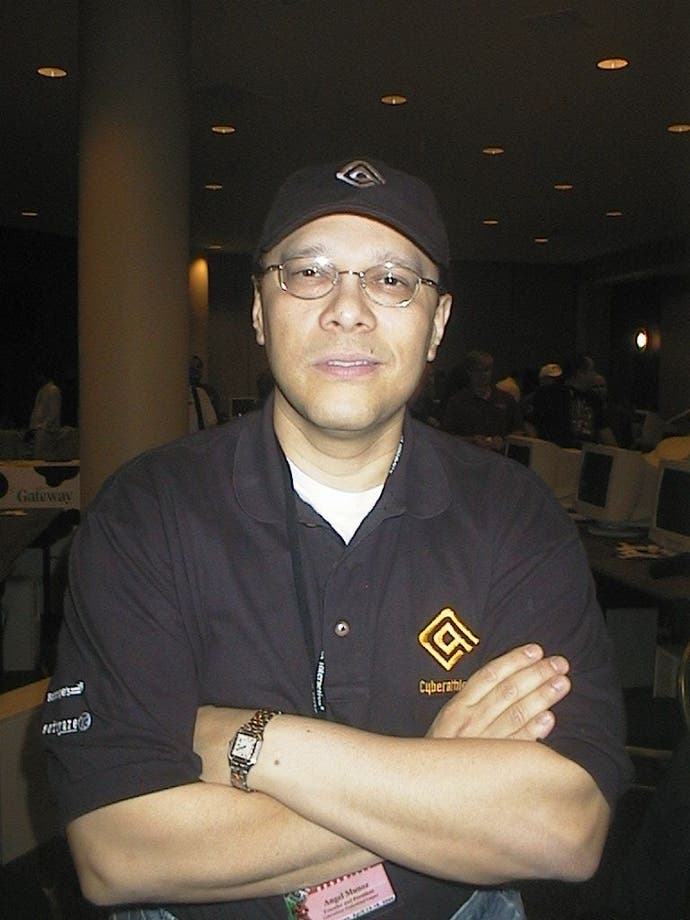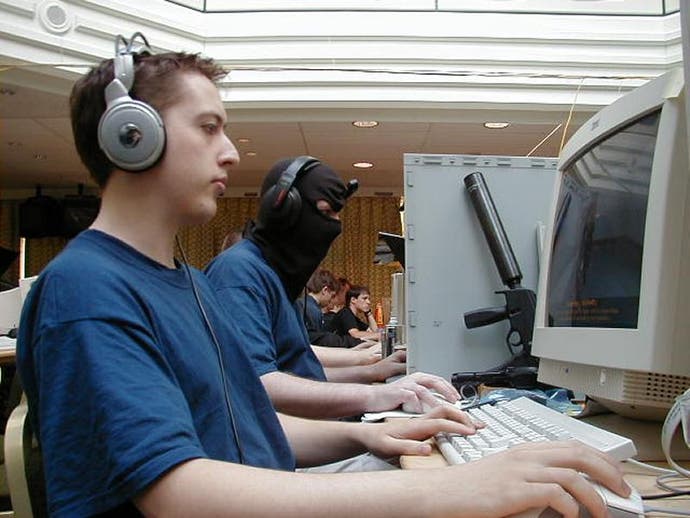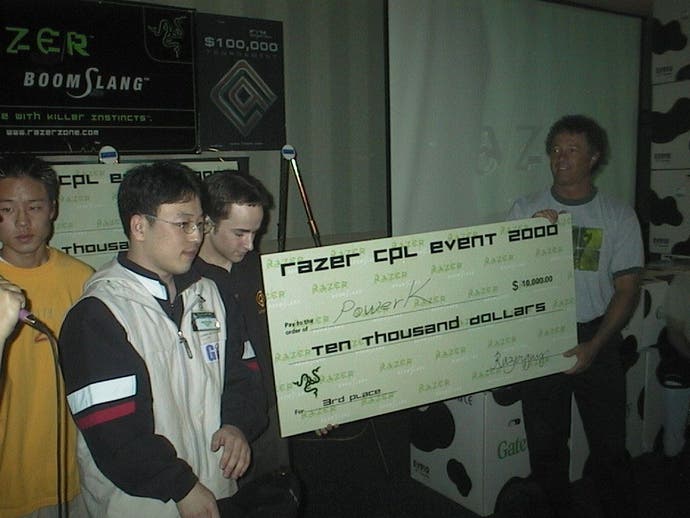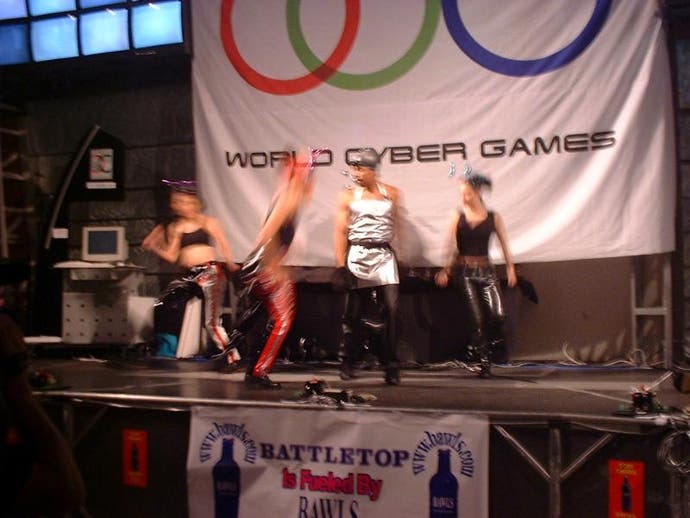Going Nowhere?
Article - the future of professional gaming, and why 2001 won't be a breakthrough year
This time last year the CPL held a massive Quake 3 duel tournament in Dallas with prizes to the tune of $100,000 up for grabs. The winner alone took home $40,000 in cold hard cash, more than many of us earn in an entire year. Not bad for a weekend playing games in a luxury hotel.
This Easter the CPL's latest event had "just" $30,000 in prize money, and as it was based around the popular team game Counter-Strike, the winners had to split their $10,000 between five or more players. For many of the runners-up, their winnings wouldn't even have covered their travel and hotel expenses for the weekend.

Wave of the Future?
At the April 2000 Razer-CPL tournament, CPL founder Angel Munoz promised ever bigger and better events, including plans for a huge $200,000 tournament this year. Meanwhile Korea's Battletop had burst on to the scene with extravagent plans for a $300,000 world championship covering multiple games, and former pro-gaming poster boy Thresh had bought the rights to the long defunct PGL, with plans to revive the league that had brought him fame and fortune.
Rumours were even spreading that his company Gamers.com were planning to run an invitational tournament featuring some of the best players in the world, to be broadcast across America on the Extreme Sports Network alongside their more traditional snowboarding and motocross events. Whether or not there was ever any truth behind these stories, it seemed certain that sooner or later somebody would manage to get a major computer games tournament televised in Europe or the USA.
It was an exciting time for pro-gaming, which finally seemed to be reaching critical mass. Prizes were going up, events were becoming more frequent and more widespread, mainstream interest was growing, and there were ever more organisations vying for our attention. And yet here we are a year later and if anything things seem to have gone backwards. So what went wrong?

Evaporation
Much of the initial promise of last year seems to have evaporated. Thresh's Gamers.com is suffering from severe financial problems and massive staff lay-offs, while Battletop's debut year proved to be something of a fiasco. Although they did an execellent job of PR at their international qualifier events, with everything from Broadway singers and former boxing champions to models and TV presenters putting in an apperance, the actual gaming side of things was poorly organised and downright anarchic a lot of the time.
Even the CPL has suffered setbacks, with software problems at the Babbages-CPL event last December knocking at least one top player out of the running early on in contentious circumstances. Meanwhile the winners have had to wait months for their prizes to be paid due to financial problems at Razer, one of the tournament's main sponsors. In fact the tech sector collapse in general and the looming threat of recession in the USA has no doubt contributed to the ever-shrinking prize packets over the last twelve months. The fact that the audience for pro-gaming isn't growing as quickly as had been expected probably hasn't helped to encourage sponsorship either.
The silver lining here is that while the CPL itself has apparently slipped in recent months, the overseas franchises are beginning to establish themselves. CPL-Europe has relaunched under new management after a disastrous false-start last year, with one $20,000 tournament already under its belt and another due in May, with several more events planned for the rest of the year. There is even a Latin American division of the CPL now, with a $25,000 event taking place in Brazil's Sao Paulo in a couple of weeks. While the prizes at these events are still lower than for similar events in the USA, they are at least a step in the right direction for European and South American gamers.

Game Off?
One of the biggest problems facing pro-gaming at the moment though is the lack of suitable games. That might sound odd, given that there are at least half a dozen first person shooters out there which are specifically designed for multiplayer gaming, but few of these are appropriate for competitions.
Quake 3 was the game which boosted pro-gaming into the big league here in the west, with its flashy graphics and stripped-down gameplay proving attractive for sponsors and spectators alike. Unfortunately the same couldn't be said for some of the competitors, who soon tired of the game. Perennial runner-up Victor "Makaveli" Cuadra once told me at a tournament that if he won he would announce that Quake 3 sucked. Sadly we missed this golden opportunity to see one of the world's top players admitting in public that he didn't even enjoy playing the game, but a year later Makaveli has quit Quake 3 and moved on to Counter-Strike, as has the CPL.
Counter-Strike no doubt seemed like a good idea at the time. More people play it online than every other first person shooter combined, and its real-world weapons and settings should make it easier for non-gamers to understand. But although it is massively popular with the hardcore, for the casual observer it is all pretty baffling, not to mention downright dull most of the time, lacking the immediacy and simplicity of a head-to-head Quake duel. It is also a team sport, which means that the once impressive cash prizes now have to be split between five times as many people.
And the shortage of suitable games is perhaps beginning to tell, with the CPL resorting to using QuakeWorld in their summer event after a falling out with the sponsors of their planned Unreal Tournament competition. While QuakeWorld was groundbreaking in its day, it is now almost five years old and looks very dated, as well as having few regular players. While we are sure that many old school gamers will come out to play a game that they grew up on, it is hardly likely to push the sport forwards or to attract the kind of mainstream media interest that it needs to grow.

Transitions
Just as the gaming industry is going through a painful transition as a new generation of consoles arrives to replace the antique PlayStation and N64, so the pro-gaming community is seeing older games like Quake 3 start to fade in popularity.
The problem is that there is little on the horizon to replace them. Doom 3 is still at least eighteen months from release, and is intended to be more of a single player experience than a multiplayer game. Tribes 2 and similar games probably won't be suitable for LAN-based events because they work best with larger teams, making it harder (and more expensive) for clans to get enough players to a tournament, and meaning smaller individual prizes. There are some interesting looking new games in development up in Sweden, but whether any of these will ever reach the kind of mass audience needed for them to be taken up by pro-gaming remains to be seen.
There were even reports at one point that the Gathering of Developers and the CPL were going to design a game from the ground-up for use in pro-gaming, but we haven't heard of any real progress since then. In fact, the best hope for eSports at the moment seems to be Unreal II, but even that isn't expected to be released until early next year now, and it remains to be seen whether Epic and Legend can pull it off this time. While Unreal Tournament is certainly a lot of fun to play, it isn't much use for professional competitions because of issues such as abuse of the teleporter and shock rifle, and a shortage of good one-on-one maps.
In the meantime companies will have to either continue using the traditional Quake 3 and Counter-Strike, or follow Battletop's example and try to cover all bases by using a range of action, sports and strategy games in a single massive event. Again though, this tends to lead to lower individual prizes, and many of the games which they use are highly confusing and very boring to watch for spectators who don't play them.

The Way Forward?
One of the challenges is that the kind of action needed to give pro-gaming a boost isn't necessarily going to be what is best for the long term future of the sport, and will require something of a leap of faith for companies which have been running in the opposite direction for the last twelve months.
For example, concentrating more of the prize money on the winner of an event will give players further down the running order, who might not win anything at all, less incentive to come back and try again next time. But newspapers are far more likely to be interested in a tournament which gives half of its $100,000 prize money to the winner than one which spreads those winnings more widely, resulting in smaller individual prizes. In the long run we obviously want to move towards a situation where everyone takes home a prize, something which The Playing Fields already does (on a very small scale) with its CPL qualifiers here in the UK. But for the moment it might actually be better to reverse that trend to try to bring in more interest and more sponsorship for the future.
And while Counter-Strike remains the most popular online shooter, switching to a complex team game from a straightforward one-on-one format is probably a huge step backwards when it comes to increasing the popularity of pro-gaming amongst the wider public. In the future pro-gaming should be able to support multiple games, but for now it is preferable to concentrate on one game that can capture the imagination of gamers and non-gamers alike. Sticking to Quake 3 is the obvious choice, as it has a proven record in competitions, is easy to understand, and is arguably the best looking first person shooter on the market at the moment. With some work on improved spectator technology, such as fixed cameras and better on-screen display of statistics and scores, just as you would see in TV coverage of football or motor sports, Quake 3 could still become the perfect game for eSports.

Catch 22
And at the end of the day it is the lack of spectators which is holding back the emergence of pro-gaming as a sport; more eyeballs means more sponsorship and therefore bigger prizes. Most of the people who watch pro-gaming events at the moment are themselves hardcore gamers, and while this was fine a year or two ago, if we are ever to truly reach the next level we need to generate mainstream interest.
This has already happened in Korea, where gaming is almost a national sport, players get regular salaries from sponsors, and companies like Battletop get support from the government to run massive international tournaments. America or Europe could be next to embrace pro-gaming in this way, but at the moment companies are caught in a Catch 22 situation - without sponsorship they will find it harder to attract the interest of the mainstream media, but without that kind of exposure it is hard for them to get more sponsorship, especially from outside of the rapidly imploding tech sector.
There is still a lot of potential there, and the idea of computer games as a sport of the future is slowing gaining pace, but so far we have not seen the kind of breakthrough that many of us were predicting just a year ago. To get out of its current rut, pro-gaming needs to do a far better job of promoting itself to the media, and to concentrate on the games and events (and players for that matter) which will bring in the most interest from outside of its traditional hardcore audience.
-







